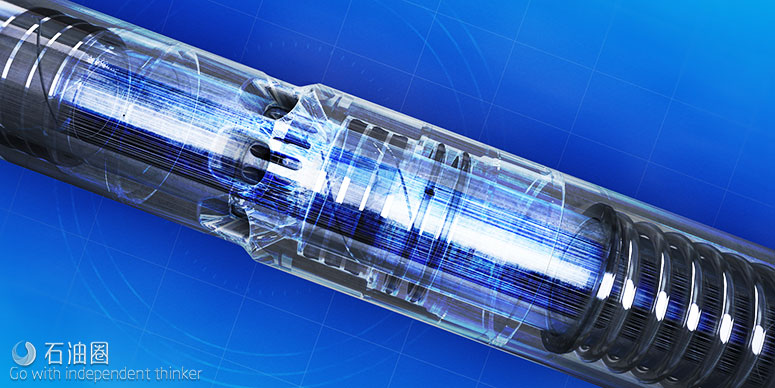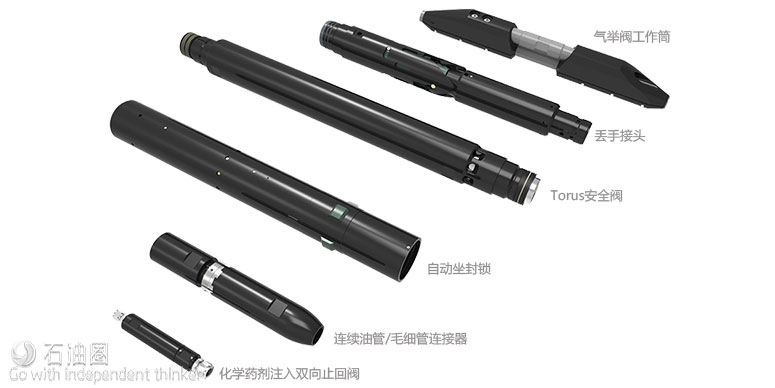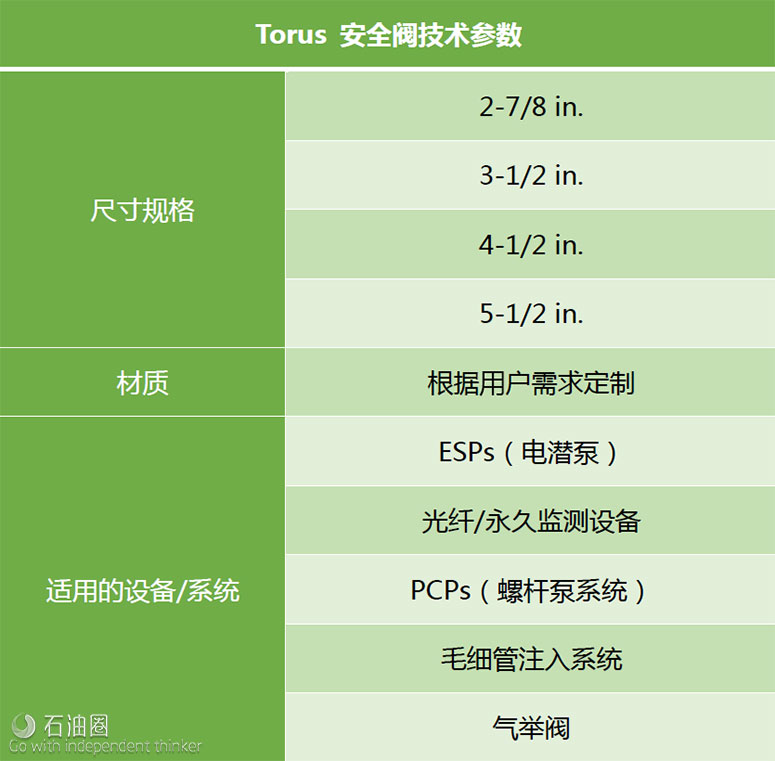The Torus? insert safety valve delivers a new level of efficiency and flexibility in through-tubing completion operations by enabling single-trip, rigless deployment of production enhancement equipment with an API 14A-tested safety valve. The Torus valve—which enables passage of through-tubing coiled tubing, capillary lines, or cables—provides fail-safe protection while allowing faster, more economical operations to extend the productive life of existing wells.
Although installing electrical submersible pumping (ESP) systems, gas lift systems, velocity strings, and chemical injection systems are common approaches to boosting production, maintaining a reliable safety barrier during the installation and the subsequent production phase is complex and cost prohibitive. This is because traditional safety valves with flapper-style closure mechanisms require an unobstructed inside diameter (ID) for operation, which doesn’t allow for the passage of insert strings. Consequently, a rig has to be mobilized to install these valves below the strings, driving up costs and HSE risks, and often, delaying operations due to rig availability and mobilization logistics.
By using a patented sliding sleeve design to control flow instead of a flapper mechanism, the Torus valve maintains functionality—during installation and production—while providing a permanent conduit through its center. The Torus valve is also tested to API 14A to ensure reliable sealing and full compliance with regulatory and safety requirements. This allows customers to carry out rigless insert string installations in wells that require a safety valve, reducing OPEX by an average of 50% while also lowering HSE risks. Wells that are underperforming or shut in can quickly be brought back online without rig-related logistics, costs, or delays.
The Torus valve’s bottom sub is modular and can be easily changed out to accommodate different applications ranging from chemical injection to permanent monitoring. The valve can also be deployed in three different configurations including through-conduit, split-conduit, and capillary-controlled. When run on a capillary line, the Torus valve can be controlled as the line simultaneously injects chemical treatments into the wellbore below, making it an ideal solution for wells with minimal facilities. A small number of pressure seals in the valve minimizes leak paths for improved reliability.
The Torus valve can also be combined with the Baker Hughes, a GE company (BHGE) TransCoil? rigless-deployed ESP system to provide a completely rigless solution for ESP installations where a safety valve is required. Contact your local BHGE representative today to learn more about how the Torus insert safety valve can reduce OPEX and risks in your next production enhancement campaign.
Applications
1.Equipment installations where a qualified safety barrier is legally required or preferred;
2.Insert ESP, PCP, and gas lift completions and recompletions;
3.Temporary or permanent installation of monitoring gauges/fiber-optic cables;
4.Foam/chemical injection;
5.Velocity strings.
Benefits
1.Provides a permanent conduit through the center of the valve;
2.Enables rigless, single-trip deployment of production enhancement equipment in wells requiring a safety valve;
3.Eliminates rig-related delays , logistics, and HSE risks;
4.Reduces OPEX by 50%;
5.Simplifies deployment.
Case study
A customer with an offshore field in southeast Asia experienced an electrical submersible pumping (ESP) system failure in one of its wells, resulting in thousands of dollars of lost production each day. Wanting to get the well back online as quickly as possible, the customer explored different through-tubing recompletion options, but they all came with a costly caveat: the customer would need to mobilize a workover rig to perform the work.
In most areas, and in the case of this customer’s well, maintaining a fully functional, API 14A-qualified safety valve is a legal requirement. However, traditional safety valves with flapper closure mechanisms fundamentally cannot maintain a permanent conduit for a through-tubing ESP’s power cable. This would typically result in the customer having to set a safety valve deep below the ESP, which can only be done using a rig. With day rates in excess of $250,000 USD and availability issues that often delay projects, mobilizing a rig is a costly and time consuming consequence of this scenario.
To help this customer keep costs low while quickly bringing the well back online, Baker Hughes, a GE company (BHGE) recommended running the ESP with its new Torus? insert safety valve. By using a patented sliding sleeve design to control flow instead of a flapper mechanism, the Torus valve maintains functionality—during installation and production—while providing a permanent conduit through its center. The Torus valve is also qualified to API 14A to ensure reliable sealing and full compliance with regulatory and safety requirements.
The Torus valve assembly and ESP were mated at surface and deployed on tubing, enabling a totally rigless operation. Independent movement of the ESP and cable allowed the rig crew to quickly and easily land the Torus valve and to continue running the ESP. After the installation was complete the well was successfully brought back online and economic production was restored.
In addition to cutting out rig-related HSE risks, the Torus valve reduced OPEX by 80% compared with the average OPEX on conventional, rig-based workovers. Pleased with the results on this job, the customer plans to deploy Torus valves in other through-tubing ESP recompletions to reduce OPEX while extending the life of its existing assets.

 石油圈
石油圈


